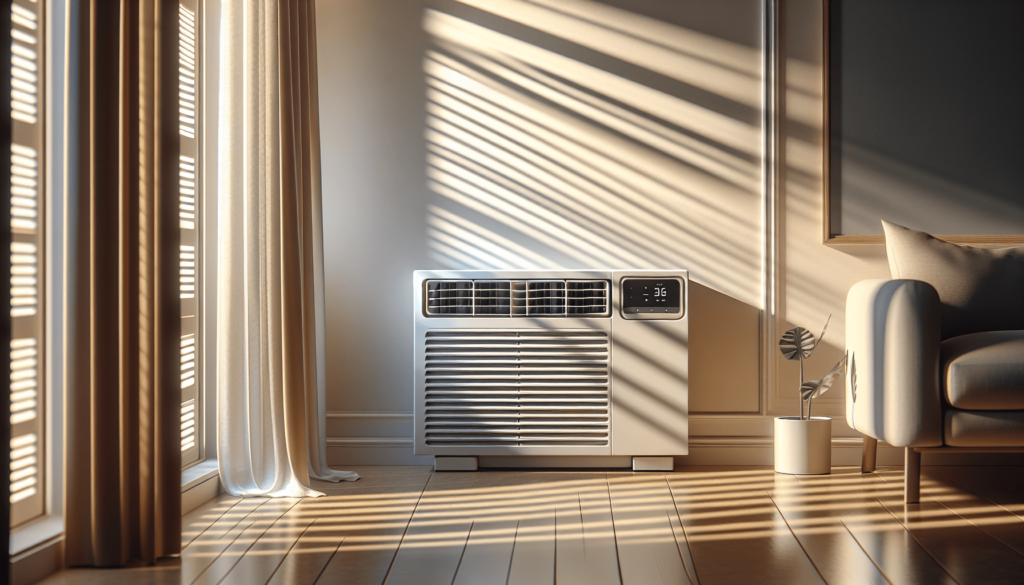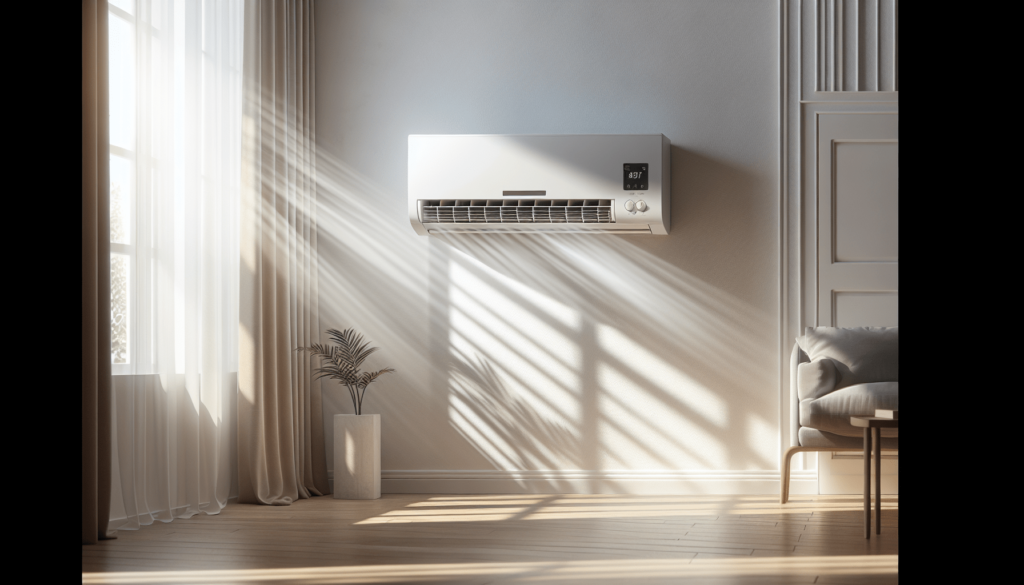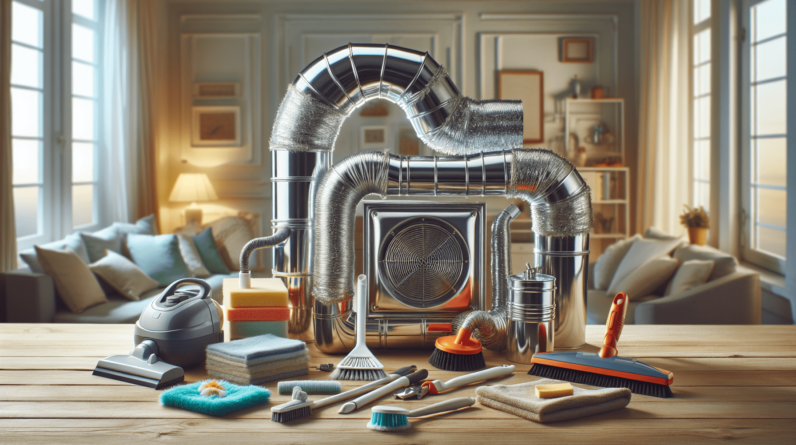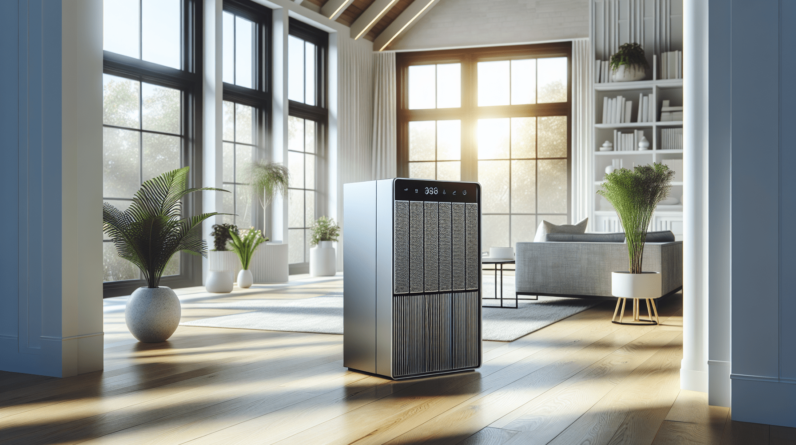

Have you ever wondered about how a heat and air conditioner window unit can improve your home’s comfort level? These versatile machines can provide a range of benefits, not only keeping your space cool in the summer but also warm during those chilly months. Understanding how they work, their features, and how to maintain them can help you make the most of your investment.

What is a Heat and Air Conditioner Window Unit?
A heat and air conditioner window unit is a compact, self-contained appliance designed to cool and heat individual rooms. Unlike central air conditioning systems, which rely on ductwork and a centralized unit, these window units are installed directly into the window frame, offering both heating and cooling capabilities in a single device.
This dual functionality makes window units particularly popular for smaller spaces, apartments, or when enhanced climate control is needed in specific rooms without the hassle of larger systems.
How Does a Heat and Air Conditioner Window Unit Work?
Cooling Mode
In cooling mode, the unit removes heat from the indoor air and releases it outside.
- Refrigerant: The process begins with a refrigerant that circulates inside the unit.
- Evaporation: When the warm indoor air is drawn in, it passes over cold coils containing the refrigerant, which evaporates and absorbs the heat, cooling the air.
- Heat Exchange: The warmed refrigerant is then compressed and sent outside the unit, releasing the absorbed heat.
- Return Cycle: The cooled air is blown back into the room, lowering the indoor temperature.
Heating Mode
In heating mode, the process is somewhat inverted.
- Reversal Valve: The device uses a component called a reversal valve to switch the flow of refrigerant.
- Heat Absorption: The unit absorbs heat from the outside air (even in cold conditions) and transfers it inside.
- Circulation: The heated air is then circulated throughout the room, providing warmth during colder months.
Benefits of Using a Heat and Air Conditioner Window Unit
Energy Efficiency
One of the most significant advantages of a window unit is energy efficiency. Unlike central cooling systems that condition the entire home, you can cool or heat specific rooms, thus minimizing energy consumption. Many of these units come with high Energy Efficiency Ratio (EER) ratings, allowing you to control your energy bills effectively.
Affordability
When compared to central air conditioning systems, heat and air conditioner window units are generally more affordable in terms of both initial purchase price and installation costs. If you’re looking for a budget-friendly option for temperature control, this could be the ideal solution.
Flexibility
You have the flexibility to install window units in specific rooms based on your needs. Whether you’re renting an apartment or want to enhance the HVAC system of your home, these units can be a great interim option, with no extensive modifications required.
Ease of Installation
The installation process is relatively simple and can often be completed without professional help, depending on your comfort level. Most come with detailed instructions, and you can usually do it in a few hours.
Portability (For Some Models)
Some window units are lightweight and portable. While they are designed for window installation, you can also temporarily detach them and reposition them within the house, as long as you have appropriate window access.
Choosing the Right Heat and Air Conditioner Window Unit
Assessing Your Space
Before purchasing, it’s essential to assess the space you want to cool or heat. Here are some factors to consider:
-
Room Size: Measure the dimensions of your room. The power of the unit is rated in BTUs (British Thermal Units), and it’s critical to select a unit that matches your room’s size.
-
Climate: Consider your local climate conditions. If you experience extreme heat or cold, investing in a unit with adequate BTUs for your room will enhance efficiency.
BTU Ratings Explained
Understanding BTU ratings is crucial for selecting an appropriate unit. Here’s a table to help you visualize the BTUs needed for different room sizes:
| Room Size (sq. ft.) | BTU Rating |
|---|---|
| 100 – 150 | 5,000 – 6,000 |
| 150 – 250 | 6,000 – 8,000 |
| 250 – 300 | 8,000 – 10,000 |
| 300 – 350 | 10,000 – 12,000 |
| 350 – 400 | 12,000 – 14,000 |
| 400 – 450 | 14,000 – 16,000 |
This breakdown can guide you in selecting a unit that will efficiently cool or heat your space.
Energy Efficiency Ratings (EER and SEER)
It’s also important to look at energy efficiency ratings. Pay attention to both the Energy Efficiency Ratio (EER) and Seasonal Energy Efficiency Ratio (SEER). A higher rating means better efficiency.
- EER: Measures efficiency during the cooling season.
- SEER: Provides a more comprehensive measure over an entire season, factoring in fluctuating temperatures.
Additional Features
When shopping for a heat and air conditioner window unit, consider features that could enhance your user experience:
- Remote Control: Adjust the settings from anywhere in the room for added convenience.
- Programmable Timer: Set the unit to turn on or off at specific times to save energy.
- Air Filters: Look for units with washable or replaceable filters to improve air quality.
- Noise Level: Check the decibel ratings; quieter models can enhance comfort, especially during nighttime use.

Installing Your Heat and Air Conditioner Window Unit
Preparation for Installation
To ensure a smooth installation process, start by gathering the necessary tools:
- Screwdriver
- Hammer
- Level
- Tape measure
- Safety glasses
- Select the Window: Choose a window that is appropriate for the unit’s size, ideally one that opens horizontally.
- Clear Space: Make sure the area around the window is clear for easy access.
- Check for Stability: Ensure the window frame is sturdy enough to support the unit’s weight.
Step-By-Step Installation Process
Here’s a brief overview of the installation steps:

- Open the Window: Fully raise the window to create an opening for the unit.
- Follow Directions: Consult the user manual for specific fitting instructions related to your unit.
- Place the Unit: Carefully lift the unit and place it onto the windowsill. Support the unit evenly and extend the side panels to fit your window.
- Secure the Unit: Close the window down onto the top of the unit, and secure it in place using brackets as recommended by the manufacturer.
- Seal Gaps: Use foam insulation strips or weather stripping to seal any gaps for improved energy efficiency.
- Connect Power: Plug the unit into a wall outlet, ensuring it’s on a dedicated circuit to avoid overload.
Safety Precautions
During installation, prioritize safety by following these tips:
- Two-Person Lift: If the unit is heavy, have someone help you lift it.
- Avoid Electrical Shock: Ensure the unit is unplugged while you install it and only plug it in after secure installation.
- Mind Your Fingers: Be cautious while adjusting the unit to avoid pinching.
Maintaining Your Heat and Air Conditioner Window Unit
Maintenance is key to prolonging the life of your appliance and ensuring it’s operating efficiently.
Regular Cleaning
Keep your unit clean to improve air quality and efficiency:
- Filters: Clean or replace filters monthly, especially during peak usage in summer and winter. Dirty filters can impede airflow and efficiency.
- Coils: Occasionally check and clean the evaporator and condenser coils to remove dust and debris.
Seasonal Maintenance
- Before Use: Each season (before turning on the heat or air conditioning), inspect the unit for any damage and clean it thoroughly.
- Check Insulation: Ensure that the insulation around the window unit is intact. Gaps can lead to energy loss.
Professional Servicing
Consider hiring a professional technician for a thorough annual check-up. They can provide valuable insights and services, such as refrigerant checks and deep cleaning, ensuring the unit operates optimally.
Troubleshooting Common Issues
You may encounter a few common problems with your heat and air conditioner window unit. Here are some troubleshooting tips:
Lack of Cooling or Heating
- Check Settings: Ensure the unit is set to the correct mode (cool or heat).
- Clean Filters: Dirty filters can restrict airflow. Clean or replace them if necessary.
- Inspect the Thermostat: Make sure the thermostat is functioning correctly.
Unusual Noises
- Fan Issues: Noise may stem from a misplaced fan blade. Check and realign them if needed.
- Loose Parts: Tighten any loose screws or components that may cause rattling or clattering.
Water Leaks
- Check Drainage: Ensure the drainage holes are not blocked. Clean them to prevent water buildup.
- Tilt the Unit: Make sure the unit is slightly angled toward the outside to allow proper drainage.
Environmental Impact
Using a heat and air conditioner window unit can have environmental implications.
Refrigerants
Many older models use refrigerants that can deplete the ozone layer. When purchasing a new unit, look for those using more eco-friendly refrigeration methods, such as R-32 or other low-GWP (Global Warming Potential) refrigerants.
Energy Consumption
While window units are often more energy-efficient than central systems, they still use electricity. Opt for units with high EER/SEER ratings to minimize environmental impact and comply with local regulations.
Final Thoughts
Understanding how heat and air conditioner window units operate and choosing the right one for your needs can enhance your living experience significantly. From installation and maintenance to troubleshooting and mindful energy consumption, you can take charge of your comfort while keeping energy efficiency in mind.
By investing time to select the perfect model and following good maintenance practices, you can enjoy a cool summer breeze or warm winter haven for years to come. Comfort is just a window away!






